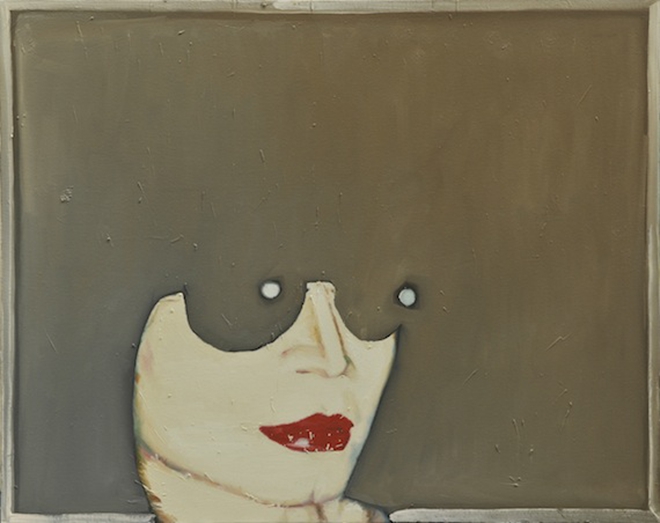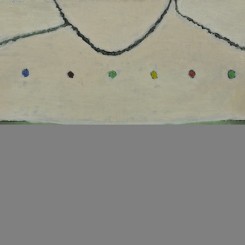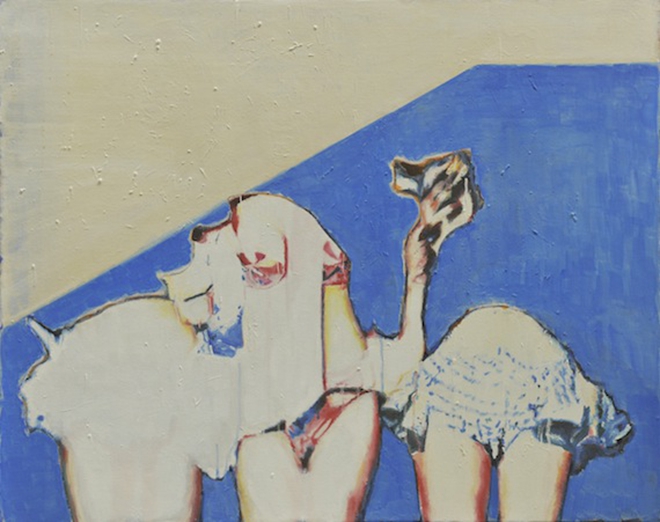“Hide,” solo exhibition by Tang Yongxiang.
Hemuse Space (3-038, Pingguoshe Bei Qu, 32 Baiziwan Lu, Chaoyang, Beijing). Apr 12–Jun 15, 2012.
From about the 1990s onwards, many contemporary artists indulged in the pictorality of painting. With easy distinctiveness and suggestive power, the appropriation of images strikes at our understanding and experience of contemporary painting. As a technique that appropriates different media, hyper-realist painting came to be favored, and Hubei, in particular, became a locus of this hyper-realism.
Tang Yongxiang, an artist from Hubei, was initially akin to other painters like Shi Chong and Xu Wentao, and had a high regard for realist techniques. After moving to Beijing in 2007, however, his ideas started to undergo a fundamental transformation. The current exhibition at Hemuse Gallery, “Hide,” fully displays the contradictions and conflicts in Tang Yongxiang’s schematic strategy, and we can tentatively label this as the “cross-section” of the artist’s conceptualization of the image. In “Six Colorful Dots and Breast,” the painting surface is divided into two utterly different sections: in the bottom half, a set of female breasts veiled by some sort of green gauze is depicted in a hyper-realistic manner, while the head of the figure was “covered over” by the artist in a technique imbued with the traces of drawing. Covering up the head with a flat, even, and light hue, conceptually the artist left only the most fundamental contour lines to indicate the shoulders and the neck as well as the incomplete head and six ornamental dots above the breasts.

Tang Yongxiang, “Red Lip of the Woman,” oil on canvas, 100 x 80 cm, 2011.
唐永祥,《那个女的嘴很红》,布面油画,100 x 80 cm, 2011
Tang’s “conquest” of the image constitutes the theme of the exhibition. Whether in “Like Part of a Woman” (2011) or “Red Lip of the Woman” (2010-2011) or “Several Circles & Five-Pointed Star” (2011), the paintings give off the sense of images piling up in reverse. In these paintings, Tang changes the ordinary relationship of the image and the background, allowing us to sense how what is covered up is what is fundamental in the subject of the surface. Through a technique of “subtraction,” or more precisely through covering up and then venting, the artist leaves viewers with eerily coincidental scenes; this also brings forth his unique experience of the image and mode of operation therewith.


